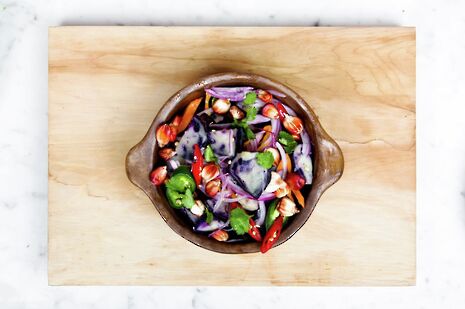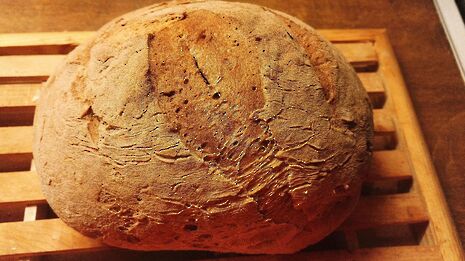Post-Christmas detox: What is the ‘right’ way to be healthy?
In her first column, Ciara McCarthy asks how to shift the excess holiday weight

We are bombarded with information about what we should and shouldn’t be eating to stay healthy. Lifestyle gurus drown our Instagram feeds in gorgeous, filtered photos of ‘superfood’ salads and porridge laden with exotic toppings that are about as easy to pronounce as they are to afford. This gives off the message that being healthy is an expensive, time-consuming pursuit.
I would argue, however, that this is really not the case. In fact, some of the foods championed by health gurus could have an adverse effect on your health. Agave syrup, for example, is hailed as a more natural, healthier alternative to refined sugar. It contains a very high percentage of fructose, similar to High Fructose Corn Syrup (HFCS) used in things like fizzy drinks. Whereas glucose can be used by any cell in the body, fructose is mainly metabolised by the liver. This is thought to lead to increased fat deposits in the liver.
Another emerging health trend that could certainly do more harm than good is the gluten-free diet. For many people suffering from coeliac disease or wheat intolerance, this is an unavoidable option. The idea that the rest of us could benefit from cutting gluten from our diets, however, lacks solid evidence. It often comes down to what you are replacing the ‘banned’ food with. It’s hardly surprising that cutting out gluten-containing foods such as cake and biscuits is likely to lead to weight loss. However, swapping wholegrain bread for a gluten-free alternative is a whole different kettle of fish. Gluten-free foods are often lower in fibre and higher in sugar. A study carried out by researchers in Leeds found evidence for a higher-than-average sugar intake and lower fibre intake in people on gluten-free diets.

One of the main attractions of diet fads like these is that they give us a clear message with a quick-fix solution. In reality, the science is a lot more difficult to interpret. Often, the evidence is inconclusive: if we compare randomised trials looking into the benefits of reducing saturated fat, some find a benefit, some find no difference, and some even suggest it could do harm. It can be very difficult to isolate one factor when investigating diet. For example, prospective cohort studies have suggested a link between fructose-containing drinks and cardiometabolic risk. However, high consumption of sugary drinks could be a signpost for an overall unhealthy lifestyle, with a high calorie intake from other sources.
“In an industry saturated by 'experts', it can be difficult to work out what to believe”
For decades, fat has been seen as the enemy, with the advice being to fill up on carbohydrate-rich food like potatoes and rice. Fat has more calories, gram for gram, than carbohydrate and protein. However, the doctor David Unwin made headlines in 2014 for advising his diabetic patients to stop counting calories and avoid carbohydrates in favour of high-fat foods. He claimed that this was a huge success, but at the time had only trialled the diet on 19 patients. Last year, the National Obesity Forum released a report entitled “Eat Fat, Cut the Carbs and Avoid Snacking to Reverse Obesity and Type 2 diabetes”. This prompted backlash from Public Health England, who argued that this was “not a systematic review of all the relevant evidence”.

The obsession with fat vs carbs and healthy vs unhealthy is part of the problem here. It would be very convenient if all foods could be labelled as either ‘bad’ or ‘good’ but this is just not the case. Both fat and carbs, although unhealthy if eaten in excess, are very important parts of our diet. Carbohydrates are the main source of fuel for exercising muscles, but fat is an important energy source for our hearts.
Cutting out entire food groups may therefore seem like the easy option, but it is far from healthy and will have a negative impact when it comes to long-term weight loss. The ‘satiety hormone’ leptin is released by fat cells. When leptin levels are at a threshold amount, this signal tells your brain that you have sufficient energy reserves and that you are full. However, when you diet and lose fat fast, leptin production falls. Falling leptin levels trigger the neuroendocrine response to starvation, promoting fat storage.
So where does this leave me in my quest to shift that mince pie weight? Blowing my student loan on expensive health foods is not the answer (phew). Neither is cutting out fat or carbs. In an industry saturated by ‘experts’ giving contradictory advice, it can be difficult to work out what to believe. Luckily, there are a few things that everyone can agree on, such as cutting down on sugar and eating wholegrains rather than refined grains.
A good approach is likely to be a Mediterranean-type diet, high in whole grains and fruit and veg, but low in saturated fat, added sugars and refined carbohydrates. As is advised on the NHS website, “anything is fattening if you overeat”. Unfortunately, we can’t side-step that by switching refined sugar for agave syrup or cutting out gluten, as Instagram would have us believe. In looking for shortcuts we seem to be overcomplicating the issue. My plan is not to bother with any health foods – just resist Sainsbury’s cookies, run to Grantchester a bit more regularly and hope for the best. Although don’t hold me to that
 Comment / Anti-trans societies won’t make women safer14 November 2025
Comment / Anti-trans societies won’t make women safer14 November 2025 News / Controversial women’s society receives over £13,000 in donations14 November 2025
News / Controversial women’s society receives over £13,000 in donations14 November 2025 News / John’s rakes in £110k in movie moolah14 November 2025
News / John’s rakes in £110k in movie moolah14 November 2025 Fashion / You smell really boring 13 November 2025
Fashion / You smell really boring 13 November 2025 Music / Three underated evensongs you need to visit14 November 2025
Music / Three underated evensongs you need to visit14 November 2025









